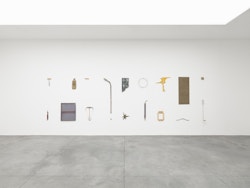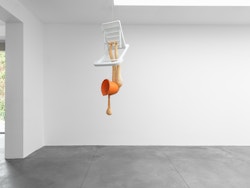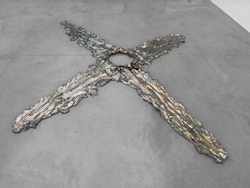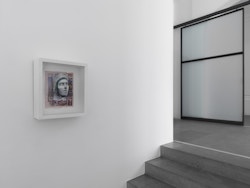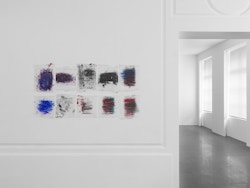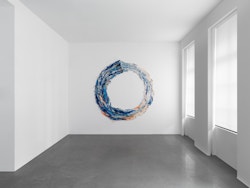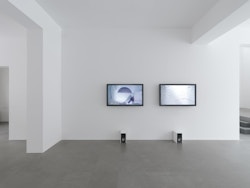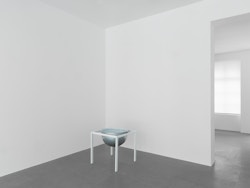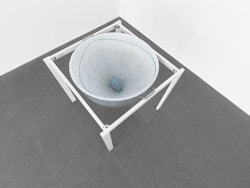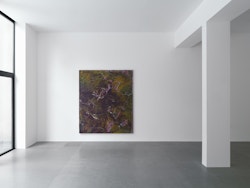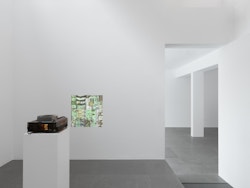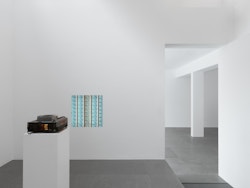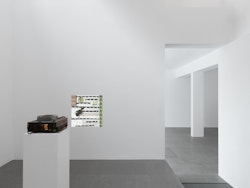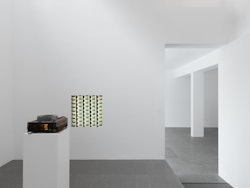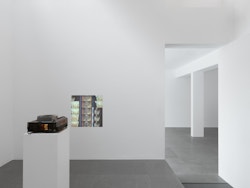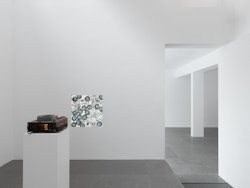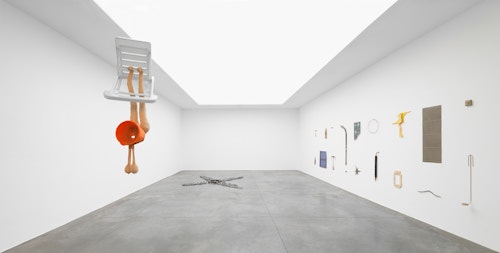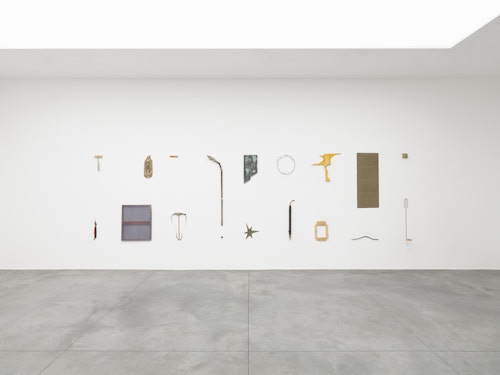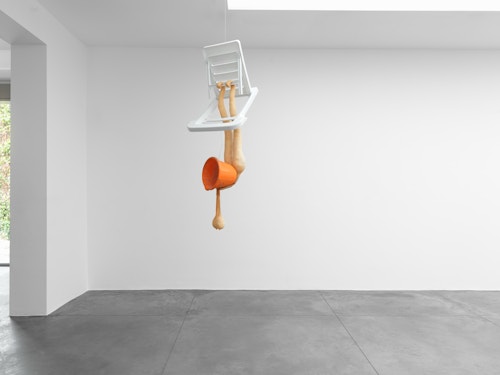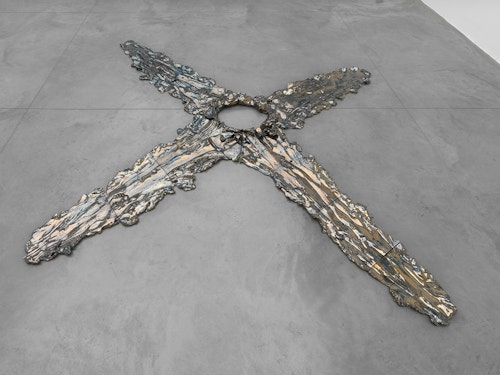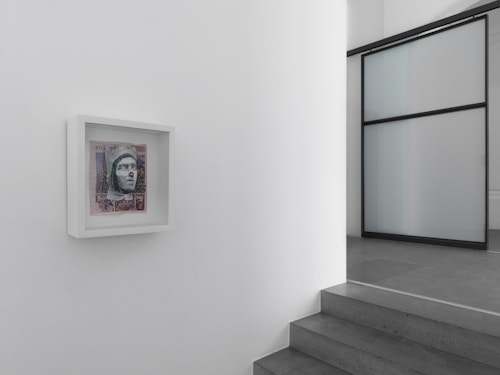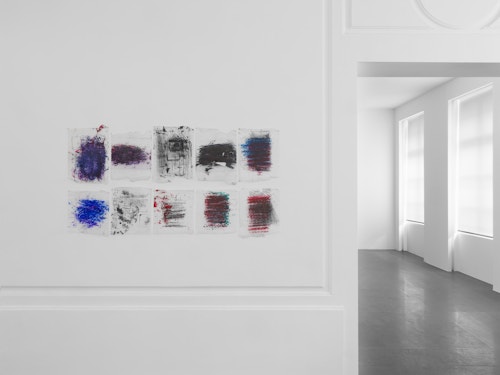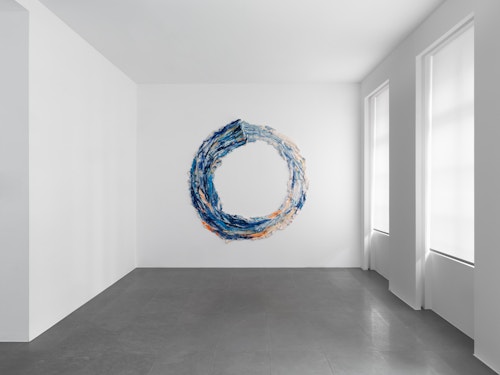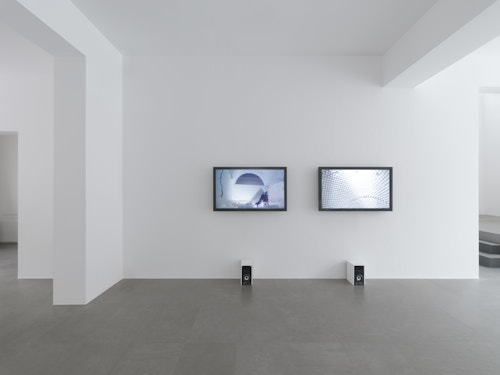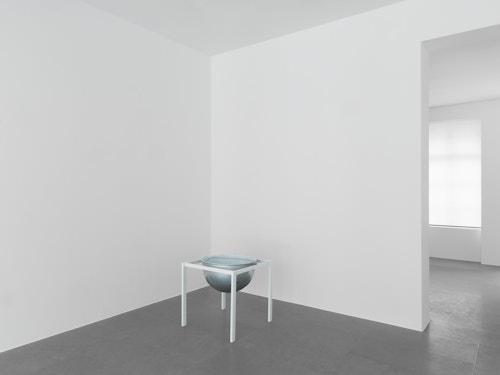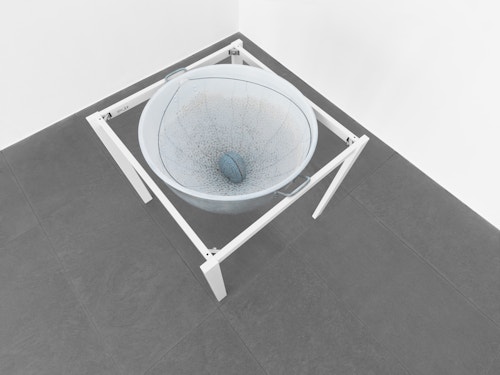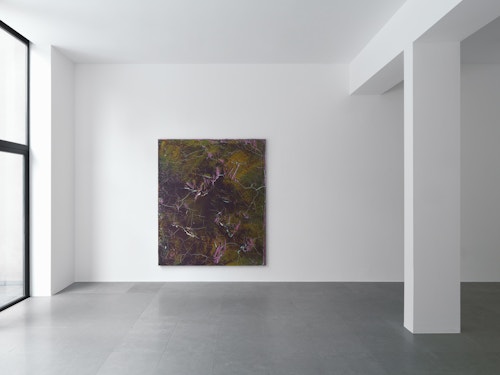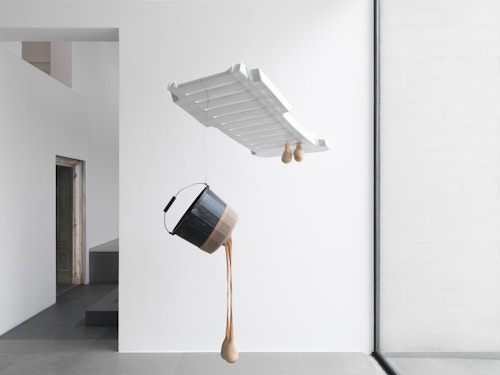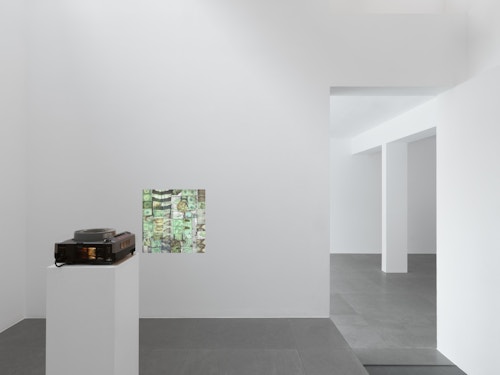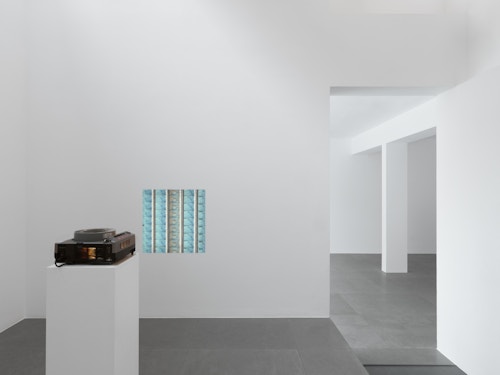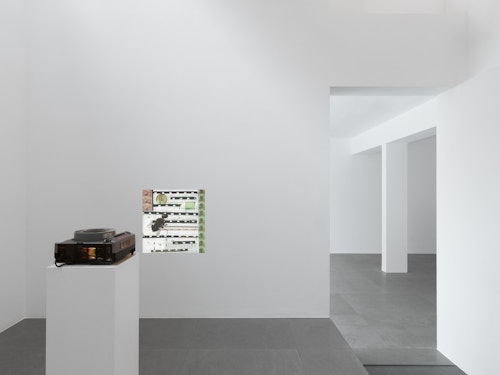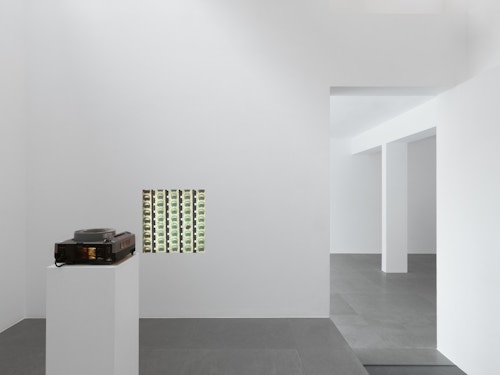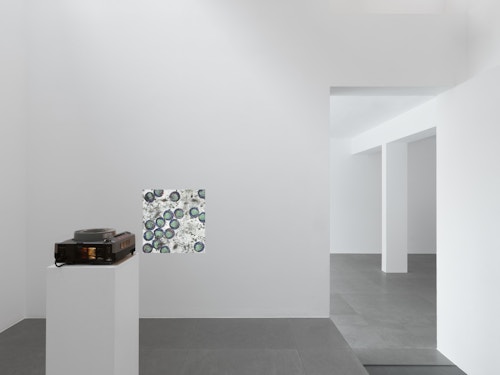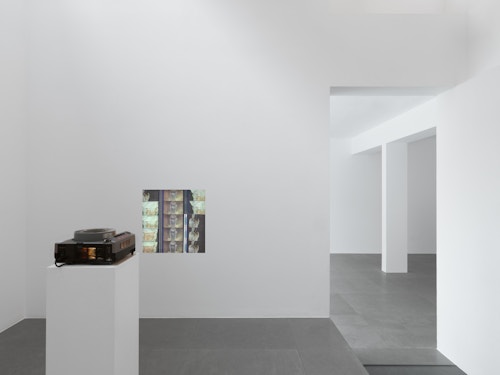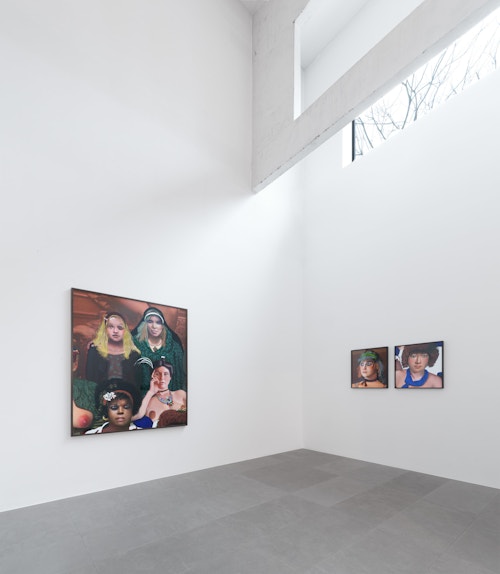
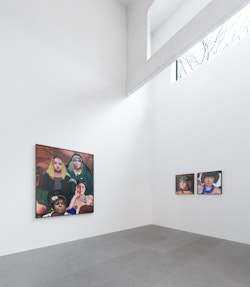
Tommy Hartung
Exploring the didactic potential of the moving image, Tommy Hartung’s videos analyze the creation and dissemination of cultural narratives through entertainment. Often taking the major themes of modernism as his subject matter, his work has addressed colonial expansion and exploration, evolution, conquest, and innovation. Drawing upon a diverse range of sources, including Anna Karenina, the Gnostic gospels, and the Bible, Hartung experiments with the history of film and sculpture and the conventions of narrative, fragmenting and deconstructing his source material.
Tommy Hartung was born in 1979 in Akron, OH. He lives and works in Queens, NY. His works have been exhibited recently at Hudson Valley Center for Contemporary Art (Peekskill, NY, USA); White Flag Projects (St. Louis, USA); International Film Festival Rotterdam (Rotterdam, Holland); MoMA PS1 (New York, USA). In 2011 he was awarded the Joan Mitchell Foundation - Painters and Sculptors Grant.
Jay Heikes
‘Fields is a sculpture that came to me by accident in 2011. Originally I placed four rocks in the corners of a large piece of paper to make a drawing. I was working on the floor and it instantly dawned on me that it was complete. It represented a moment of alchemy in which magic was possible and what was to happen between the rocks was limitless. I could feel a field of energy being created in the center of the paper. From there I changed the materials to two hand-dyed pieces of linen soaked in Purpurissum (a combination of Murex, Indigo and Madder originally used in the ceramics of Pompeii) in place of the paper and each rock was replaced by an aluminum sulfate crystal. At the time I was living in Rome and I was researching the history of Murex and its symbolic relationship to royalty. Murex is a dye (now an available pigment) more expensive than gold by the gram and is extracted through the fermentation of a gland from a rare mollusk in the Mediterranean. The resulting dye can be used to treat fabric by a delicate process of dyeing/staining in which the dye oxidizes in the sun going from yellow to green and finally to a light purple. It was originally recorded and used in the times of Pliny the Elder to signify royalty by dyeing textiles with thin stripes. It is said to take over 10,000 mollusks to make one gram of the Murex pigment. I wanted the historic narrative of the ingredients to be a part of the process while creating a portal in which anything you mentally put on to the ground in front of you would metaphorically materialize. It became like a new age wishing well related to the cult of painting and led to my current interest in a certain kind of tool that precedes language. Drawn & Quartered is an indexical display of these ‘tools’. Consisting of 18 parts, the index works like an alphabet for a newly conceived manifesto in which, like all manifestos, the tools of the present have become inadequate. My hope is that through the material investigations with elements like Bismuth (the heaviest metal that is not radioactive and often used in shotgun shells instead of lead for its non-toxicity) and processes such as wrapping and sharpening I am setting the stage for an abstract space that as the Gutai artists spoke of can be a “subjective shape of space, one which really deserves the name creation”.’
Heikes was born in 1975, Princeton, NJ. He lives and works in Minneapolis. His works have been exhibited recently at Aspen Art Museum (Aspen, USA); Shane Campbell Gallery (Chicago, USA) Federica Schiavo Gallery (Rome, Italy).
Alfred Leslie
American artist Alfred Leslie has updated his craft for the digital age. Famous since the 1960s for his abstract and figurative painting, the 85-year-old prefers to think of these images as ‘pixel scores’. His realistic painting style has now been merged with the modern technology to create fantastic hybrid views. For this new series, called The Lives of Some Women, Leslie is looking both forward and backward, recycling from an earlier body of work, and reinventing his original subjects to fit in with current digital advancements. Through the use of a computer tablet, stylus, mouse and Photoshop, Leslie has rearranged and recreated his original body of work, inventing a unique blend of photography, drawing, and painting. The subject matter is vaguely a 1930s brothel, and includes females in various stages of nudity and undress.
Alfred Leslie was born in 1927 in New York. He currently lives and works in New York. His work is in the collection of the Whitney Museum of American Art (New York, USA) and Museum of Modern Art (New York, USA).
Sarah Lucas
‘Loungers were originally conceived for the foyer of the Britten studio at Snape Maltings, a raw brick space with stairs and a mezzanine level. I wanted to use the space between the two levels. I drew on familiar elements - stuffed tights, buckets. They have the uncanny air of figures hanging. Looked at another way they’re a bit like musical instruments.’
Sarah Lucas was born in 1962 in London. She lives and works in Suffolk. Upcoming exhibitions include Whitechapel Gallery (London, UK). Her works have been exhibited recently at Sadie Coles (London, UK); Home Alone Gallery (New York, USA); Henry Moore Institute (Leeds, UK); Kunsthalle Krems (Krems, Austria)
Luther Price
‘THE HANDMADE SLIDES ARE AN EXTENSION OF MY FILM MAKING PROCESS........WHEN I’M CUTTING FILM ,.......I NEVER THROW ANYTHING OUT........ALL THE TINY SCRAPS AND CUTS GO INTO A PLASTIC BAG.........AND THAT IS THE SAME FOR ALL THE MATERIALS THAT GO INTO THE WORK….....THE PROCESS BECOMES A BIG PART OF IT ALL.........WITH THE SLIDES I’D USE THE LEFT OVER SCRAPS TO MAKE THESE STATIC VERSIONS…........BUT THEN , THEY STARTED TO BECOME THEIR OWN THING...........I SAW THAT I COULD BUILD AN ELEMENT OF WORK WITH IN THAT STRUCTURE..............THE STATIC IMAGE COULD BE SIGNIFICANT WITHIN ITS OWN ROTATION IN TIME.................AND EACH CARROUSEL MIGHT HOLD REASONS TO BE ITS OWN BODY OF WORK............THE ‘MEAT’ SLIDES ARE A TEMPLATE..........FOR ALL OF THE SLIDE WORK IV’E MADE IN 2012........BODIES OF WORK HAVE EVOLVED............MOST RECENTLY ,.........#9............, a 2012 work,........HAS BECOME A MULTI CARROUSEL PROJECTION.......AS WELL AS ‘UTOPIA’.....ALSO,.......2012.........HAS BECOME A MULTI IMAGE PROJECTION..............THE STATIC WORK FEEDS BACK TO THE 16MM FILM WORK........AND THEN BACK AGAIN.................THE WAX INK BLOTS RE FROM THE DIRECT PROCESS OF PAINTING ON FILM WHILE MAKING MY INK BLOTS….......A SERIES OS FILMS FROM 2005–2012............I’D USE A PIECE OF WAX PAPER OVER MY LIGHT BOX,....NOT TO SOIL IT ,...WHILE ROLLING OUT INKS OVER CLEAR LEADER AND FOUND FOOTAGE...........I SAVE ALL THE WAX PAPERS...........SEVERAL HUNDRED OF THEM..........PART OF THE PROCESS...........PERHAPS THEY ARE SOMETHING TOO............RECENTLY,.......I’VE BEEN CUTTING UP SOM OF THE WAX INK BLOTS AND MAKING STATIC HANDMADE SLIDES FROM THEM.............’
Luther Price was born in 1962 in Marlboro, Massachussetts. He lives and works in Revere, Massachussetts. His work has been widely screened in the United States and Europe at such venues as the Museum of Modern Art, the Whitney Museum of American Art, and the San Francisco Cinematheque. He is a professor at the Massachusetts College of Art and Design.
Brie Ruais
‘In Circle Game (Push 350 pounds of clay in a circle until the end becomes the beginning and the color de-saturates), and Five Ways Out from Center (Rip open the starting point), I began the pieces with a directive that employs two constraints: an intimidating quantity of the clay, and the direction in which the clay will be spread out. The task is literal, and it’s meaning metaphorical. The shapes themselves are used historically as demarcations of space and territory: one is an unending encircling gesture, while the other is a splay-legged indication mark. The directive is necessary to my process because it creates a space where physical momentum and struggle take over to complete the task. What carries over into the finished piece is a sense of body-awareness; based on the scale of the work and the trace gestures in the clay, it is clear that the piece is the result of one body’s action as it relates to space, architecture, terrain, and the mapping of movement.’
Brie Ruais was born in 1982, in Southern California. She lives and works in New York City. She received her BA from NYU in 2004 followed by an MFA from Columbia University’s School of the Arts in 2011.
Ryan Sullivan
Ryan Sullivan explores naturally occurring phenomena (rust, sedimentation, cracking or gravity, to name a few among their rich and diverse evocations) creating works that ultimately read as abstraction. The works appear as topographies, but their stunning physicality undermines simple signification. The cracks, mounds and fissures in Sullivan’s works manifest the electric instability of the painted surface, and the dynamism of the artist’s process. Sullivan’s thickly applied canvases invoke the materiality, alchemy and entropy inherent to the activity of painting.
Sullivan was born in 1983 and lives and works in New York City. His works have been exhibited recently at White Flag Projects (St. Louis, USA), the Rubell Family Collection (Miami, USA), West Street Gallery (New York, USA), Maccarone (New York, USA) and MoMA/PS1 (New York, USA). In 2013 he will be artist-in-residence at both the Robert Rauschenberg Foundation (Florida, USA) and the Chinati Foundation (Texas, USA).
Clarissa Dalrymple
Clarissa Dalrymple (born, England) is an independent curator who lives in New York, NY. She is credited with having curated early exhibitions of contemporary artists in the United States including Christopher Wool, Ashley Bickerton, Collier Schorr, Haim Steinbach, Nayland Blake, Michael Joaquin Grey, Jorge Pardo, Damien Hirst, Sarah Lucas, Gary Hume, Rachel Whiteread, Neo Rauch, Adam McEwen, and Nate Lowman. The New York Times has described Dalrymple as being known for ‘an almost psychic ability to pinpoint who and what in art will matter next’.

